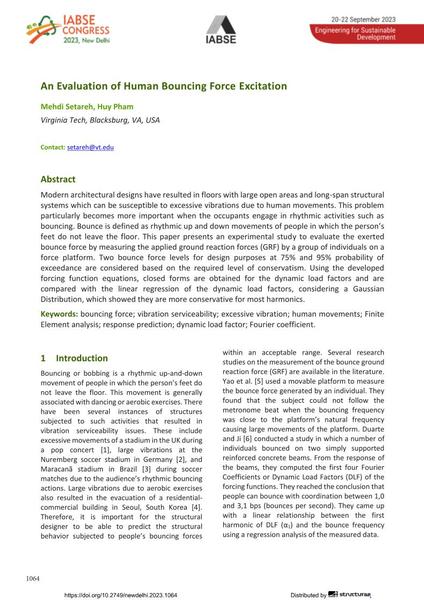An Evaluation of Human Bouncing Force Excitation

|
|
|||||||||||
Détails bibliographiques
| Auteur(s): |
Mehdi Setareh
(Virginia Tech, Blacksburg, VA, USA)
Huy Pham (Virginia Tech, Blacksburg, VA, USA) |
||||
|---|---|---|---|---|---|
| Médium: | papier de conférence | ||||
| Langue(s): | anglais | ||||
| Conférence: | IABSE Congress: Engineering for Sustainable Development, New Delhi, India, 20-22 September 2023 | ||||
| Publié dans: | IABSE Congress New Delhi 2023 | ||||
|
|||||
| Page(s): | 1064-1071 | ||||
| Nombre total de pages (du PDF): | 8 | ||||
| DOI: | 10.2749/newdelhi.2023.1064 | ||||
| Abstrait: |
Modern architectural designs have resulted in floors with large open areas and long-span structural systems which can be susceptible to excessive vibrations due to human movements. This problem particularly becomes more important when the occupants engage in rhythmic activities such as bouncing. Bounce is defined as rhythmic up and down movements of people in which the person’s feet do not leave the floor. This paper presents an experimental study to evaluate the exerted bounce force by measuring the applied ground reaction forces (GRF) by a group of individuals on a force platform. Two bounce force levels for design purposes at 75% and 95% probability of exceedance are considered based on the required level of conservatism. Using the developed forcing function equations, closed forms are obtained for the dynamic load factors and are compared with the linear regression of the dynamic load factors, considering a Gaussian Distribution, which showed they are more conservative for most harmonics. |
||||
